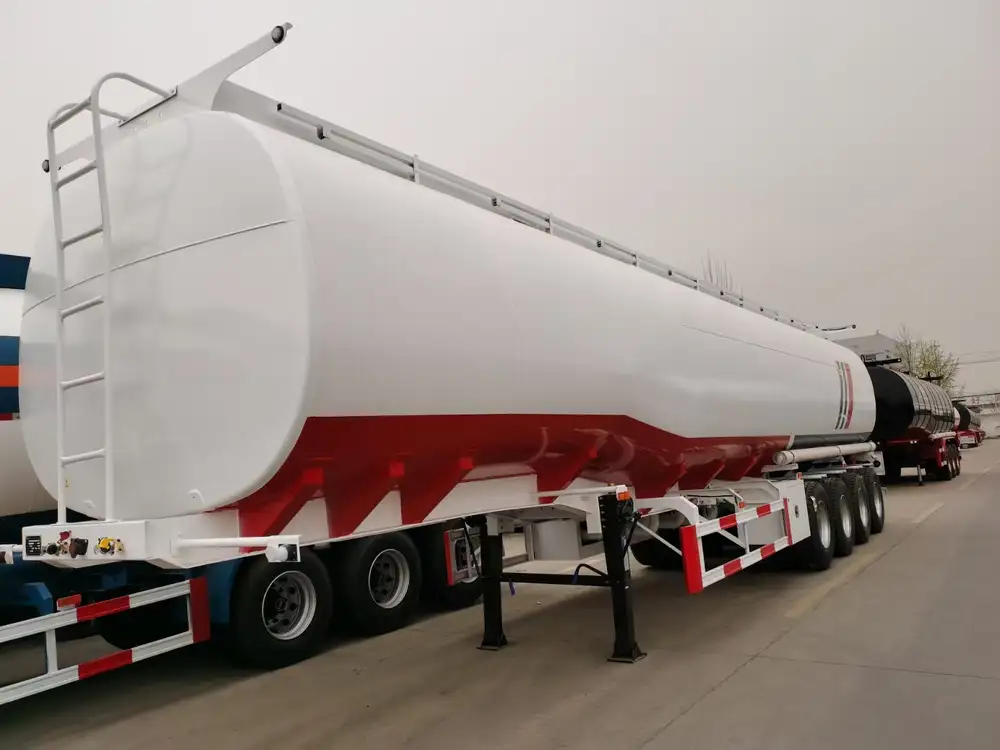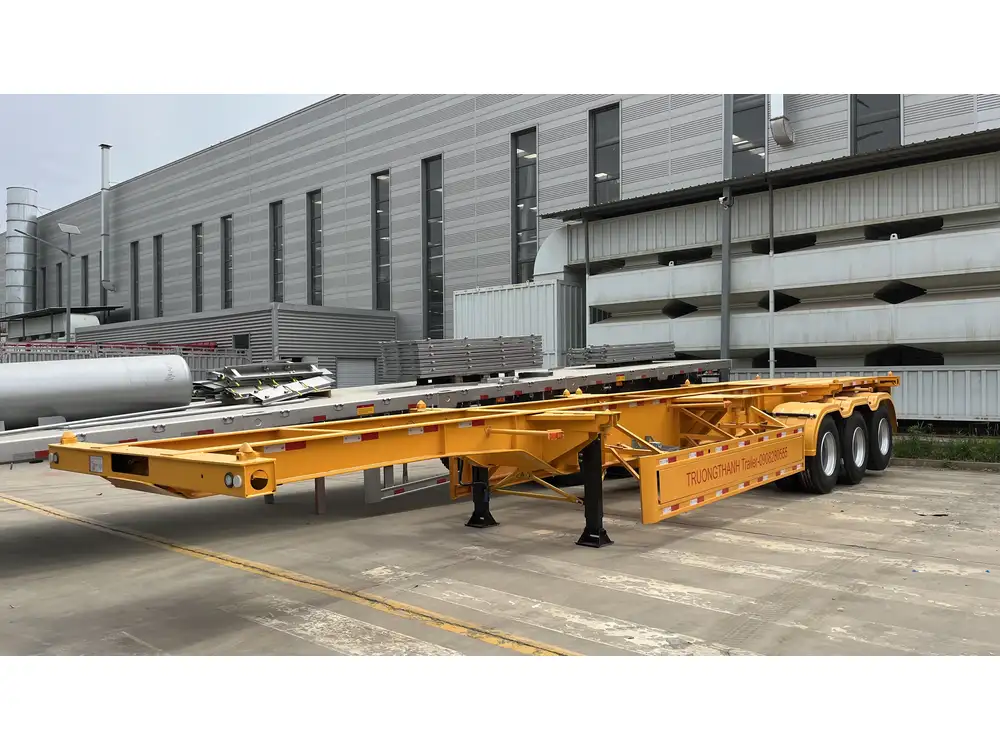Transporting shipping containers requires precision, expertise, and the right equipment—integral elements that ensure the safeguarding of goods throughout a journey. Whether for temporary storage, relocation, or moving goods to a different site, the process of placing a container onto a trailer must be executed with meticulous care. This comprehensive guide will explore the techniques, necessary equipment, safety measures, and tips to efficiently and securely put a container on a trailer.
Understanding the Basics of Trailer Types for Container Transport
Before diving into the specifics of how to place a container on a trailer, it’s crucial to understand the different types of trailers suitable for container transport. Selecting the right trailer is paramount to ensure safety and efficiency. Below are some of the most common trailer types:
| Trailer Type | Description | Suitable Container Size |
|---|---|---|
| Flatbed Trailer | A level platform without sides or a roof, used for versatility. | 20′, 40′, and 45′ |
| Drop Deck Trailer | A trailer with a lower deck height, allowing for taller containers. | 20′, 40′, and 45′ |
| Gooseneck Trailer | A trailer designed with a front coupler that connects to a truck bed. | 20′, 40′, and 45′ |
| Chassis Trailer | Specifically designed for transporting containers with twist locks. | 20′, 40′, and 45′ |
Choosing the Right Trailer
Choosing the right trailer type hinges on several factors including the container size, weight, and transportation route. For instance, if transporting a 40-foot container through low-clearance areas, a drop deck trailer would be the best choice due to its reduced height profile.

Preparing Your Equipment and Site
Before the actual loading process begins, preparing both the equipment and the loading site is essential. This phase minimizes delays, enhances safety, and ensures a smooth operational flow.
Required Equipment
- Crane or Forklift: Depending on the container size, you might need a crane or a sufficiently robust forklift equipped with the necessary attachments to safely lift the container.
- Container Chassis: Ensure the chosen trailer has a certified container chassis equipped with twist locks.
- Chains and Straps: To secure the container post-loading.
- Safety Gear: Hard hats, gloves, and steel-toed boots for personnel involved in the loading process.
Site Preparations
- Surface Inspection: Ensure the area is clear of debris, level, and stable.
- Strategic Layout: Position the trailer close enough to the container for efficient lifting, ensuring room for the crane or forklift to maneuver.
- Signal Personnel: Designate clear signalers for guiding lifting machinery.

Step-by-Step Process: Loading the Container onto the Trailer
Now that we understand the foundational elements, let’s detail the systematic process of placing a container on a trailer.
Step 1: Position the Trailer
- Ensure the trailer is parked on stable ground.
- Activate the trailer’s brakes to prevent any movement during the loading process.
- Align the trailer near the loading area, ensuring it’s correctly positioned under the container.
Step 2: Attach the Lifting Device
- For a crane, position it at an appropriate angle to ensure optimal lifting leverage while maintaining safety.
- For a forklift, dial down the forks and ensure they fit snugly under the container’s base.
Tip: Always check the ratings for your lifting equipment to ensure they can handle the weight of the container.

Step 3: Lift the Container
For Crane Users: Securely attach the lifting cable to the container’s corner castings. Gradually raise the container while monitoring for any tilt or sway.
For Forklift Users: Lift the container slowly, ensuring forks are level and aligned with the center of the container to maintain balance.
Step 4: Position Over the Trailer
- Once the container is lifted to the desired height, carefully maneuver the lifting device to position the container directly above the trailer.
- Maintain a consistent and gentle motion to avoid sudden swings.
Step 5: Lower the Container onto the Trailer
- Gradually lower the container until it rests firmly on the trailer.
- Ensure the container aligns precisely with the twist locks on the chassis.

Step 6: Secure the Container
- Engage the twist locks to secure the container in place.
- Use chains and straps as additional security measures to prevent any movement during transport.
- Double-check all connections and locks to ensure the container is secure.
Best Practices for Safety and Efficiency
Achieving the seamless transfer of containers requires adherence to best practices that promote safety and operational efficiency.
Safety Protocols
- Regular Training: Ensure all personnel are trained to operate the machinery properly and understand safety protocols.
- Risk Assessments: Conduct thorough risk analyses before beginning a loading operation.
- Communication: Maintain constant communication among team members using walkie-talkies or other devices.

Efficiency Tips
- Practice Load Management: Prioritize organizing the loading schedule to avoid unnecessary delays and ensure adequate use of equipment.
- Visual Confirmations: Use visually driven checklists to confirm that each step is performed correctly before moving forward.
- Record Keeping: Maintain logs of container weights and transport routes as a reference for future jobs and operational assessments.
Common Challenges and Solutions
During the loading process, several challenges may arise. Being prepared can help mitigate potential issues effectively.
| Challenge | Description | Solution |
|---|---|---|
| Container Instability | A container may shift while lifting. | Use stabilizers or ensure correct lifting techniques. |
| Equipment Malfunction | Machinery may fail during the process. | Conduct pre-operation checks and have backup equipment at hand. |
| Uneven Surface | The trailer may shift if the ground is uneven. | Employ leveling blocks or place the trailer on stable ground. |
Conclusion
Successfully placing a container onto a trailer demands a combination of the right equipment, precise technique, and thorough safety measures. By understanding the types of trailers available, preparing your site and equipment adequately, and following a structured loading procedure, you can ensure the safe transport of containers for various applications.
Incorporating wisdom from best practices and being aware of common challenges empower you to execute loading operations that are not only efficient but also safe. We encourage the implementation of the strategies outlined in this guide to streamline your container handling processes, elevating operational efficacy while curbing risks associated with container transport.



